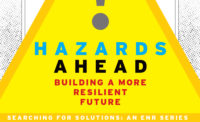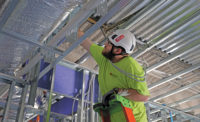In the past two decades, more than half of construction fatalities have been caused by electrical incidents, according to the U.S. Dept. of Labor’s Bureau of Labor Statistics. In light of troubling statistics on electricity-related injuries and fatalities, the National Academy of Construction and the Institute of Electrical and Electronics Engineers are investigating how best to prevent future incidents.
 |
| Deborah Grubbe |
Calling electricity a “silent killer,” Deborah Grubbe, chair of the NAC safety committee, tells ENR that BLS data show that the percentage of non-fatal injuries caused by electrical shock or burn—0.16%—is very small compared to other injury types, but that belies the issue. BLS data show that electricity-related injuries are the second leading cause of fatalities in construction and the second most costly in terms of workers’-compensation claims.
Statistically, the problem is far more acute in construction than in other industries. Across all industries in 2015, 60% of fatal electricity-related injuries occurred in construction, according to the Electrical Safety Foundation International. The 81 fatal electricity-related injuries recorded that year were more than four times the number in the second-ranking source.
More troubling, while the total number of electricity-related fatalities generally have dropped every year during the past two decades, the rate is reducing more slowly in construction. Between 1998 and 2002, construction tallied 45% of all electricity fatalities; between 2003 and 2009, that rate rose to 52%. Crafts that are not directly trained in electrical safety may be at the most risk, with laborers most affected by electricity-related incidents.

NAC, an industrywide body of experts who work on critical national issues such as safety, and IEEE took a first step toward confronting the issue at an Electrical Safety in Construction Workshop, held in Washington, D.C., on Oct. 25-26. Through a series of brainstorming sessions, attendees identified dozens of issues and barriers and offered suggestions for how to overcome those challenges.
Over the next six months, the group will discuss broader proposals for action, Grubbe says. Already, NAC sees opportunities, particularly in leading and supporting education efforts such as including hazard identification and safety in university engineering curricula, she says. NAC and IEEE also are looking to collaborate with other organizations, such as working with the National Institute for Occupational Safety and Health on a “prevention through design” initiative.
Architect of the Capitol Stephen Ayers, who attended the workshop, says the issues raised were enlightening, especially after an electricity-related near-miss on one of his recent jobs. “We will take some of these ideas back to the office, change the way we work and change the way we approach our safety program,” he says. “That’s what this is all about.”




Post a comment to this article
Report Abusive Comment